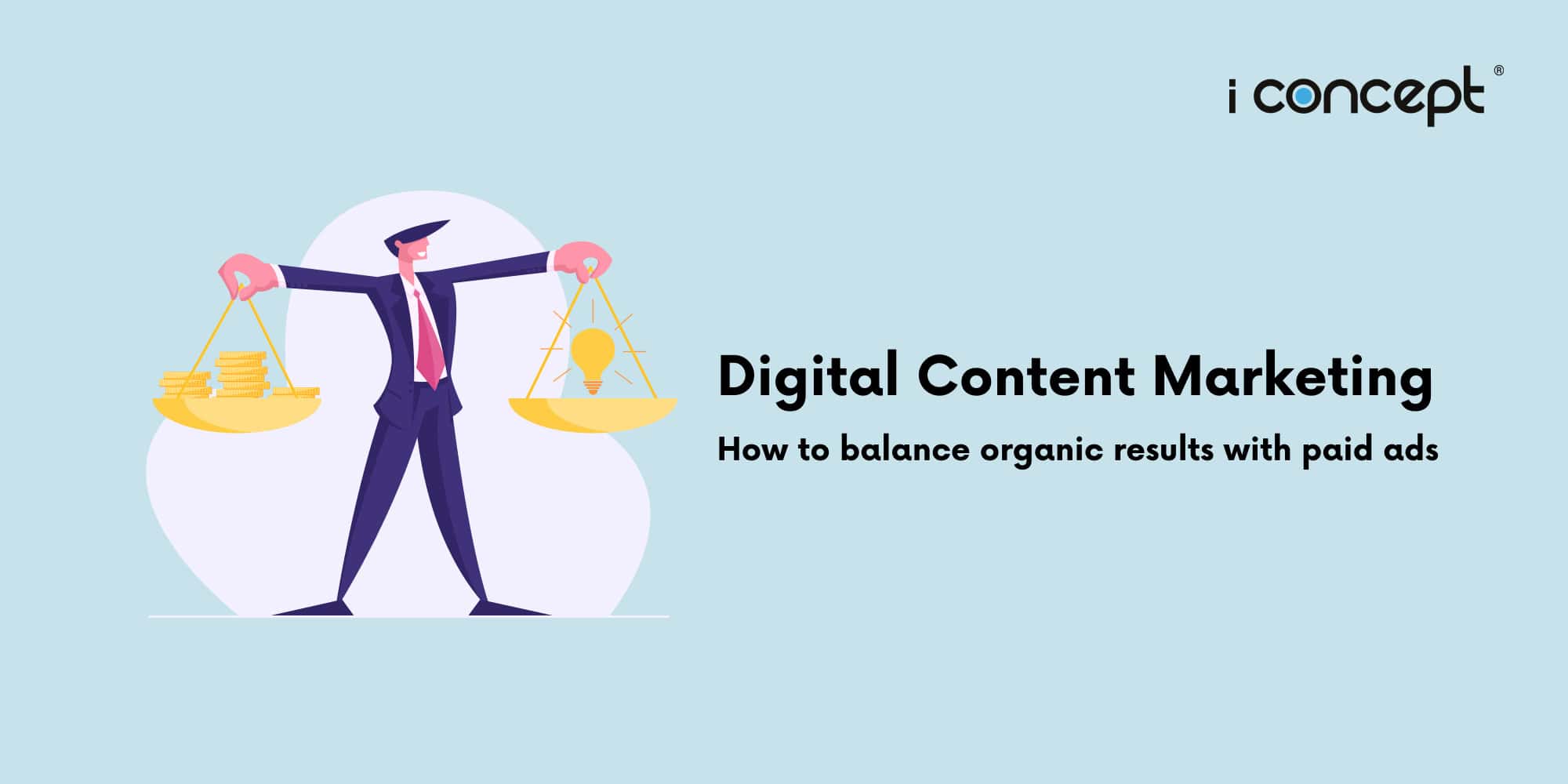Social media can positively impact your website’s SEO (Search Engine Optimisation) performance and boost your search engine ranking (such as your Google rank).
Social media management can and should be a valuable ally to SEO. Yet, too many marketers still silo SEO and social media marketing versus seeing them together as one holistic ecosystem.
Let’s take a look at five ways social media can benefit SEO and why the two should be working together. You’ll learn social media strategies to maximise the impact it has on your organic search efforts.
How does social media impact website SEO?
First, it’s important to recognise that social media does not directly boost your search engine results page (SERP) ranking. There’s a lot of mixed messaging out there on this topic, despite numerous studies and claims.
Search engine giant Google has explained that it crawls the web for information, effectively taking a snapshot of that moment in time. And that would include information that is constantly updated on social media platforms, such as Twitter and Facebook.
However, there have been numerous studies, including one report by an SEO applicator tool, which looked at millions of social shares and concluded that shares on social media sites have no real impact on SEO rankings.
Still, this particular study found that when more people share content on social media, it does generate social signals that indicate your posts are useful to your target market.
Some research studies have cited a correlation between high shares and high rankings on certain social media platforms, but it is important to note that correlation does not equate to causation. Any correlations are more likely an indicator that a website is doing a good job of producing high-quality content that is engaging audiences on both social media and organic search traffic channels.
Search engines are also limited by the challenge of assessing the true identity and authority of social profiles, which makes it difficult for them to know how much value to give a link.
What is understood is that Google doesn’t consider a share on Facebook to be equivalent to a backlink from an authority site. But social media does influence SEO in other, less direct ways, including:
- Distribution of content
- Raising of brand awareness
- Enhancing of brand reputation and authority
- Improving the lifespan of a post
- Increases organic traffic and online visibility
All of these benefits add up to have a notable impact on your SEO ranking.
How to integrate SEO and social media
As with any SEO or social media strategy, content is a key element of how successful your overall strategy is going to be.
Finding the sweet spot
The sweet spot is where your SEO, content marketing and social media strategies come together to complement each other.
You can reach this sweet spot by creating great content that informs, such as:
- Blogs or articles
- Guides
- Videos, video stories, live videos
- Podcasts (with transcripts)
- Infographics
Topic clusters
Topic clusters are a great way to structure your informational content and incorporate SEO writing into your content mix. Essentially, you have the main topic and several sub-topics branching out from it. For example, your main topic might be about social media marketing, and you could then have some sub-topics about marketing on different social media platforms.
In topic clusters, the main topic is called the pillar content. And the sub-topics are the cluster content. When structuring your content, be sure to use hyperlinks between your pillar and cluster content.
Tailor your content
Think about what stage of the journey your customers are at so you can nurture them in the funnel. Informational content is most important at the top when generating awareness and interest. People aren’t ready to make a buying decision yet. The closer the person is to making a buying decision, the more important transactional content becomes. This is where you make the conversion process as smooth as possible for customers.
A common mistake is to focus solely on transactional content. If your social media channels are all asks and promotions, you won’t build the following that you want. It’s harder to gain a good SEO ranking if you’ve just got transactional content.
So serve first (with informational content) and sell second (with transactional content). This makes the content more appealing to both social media as well as Google.
5 Tips to improve your SEO for social media
- Publish high-quality content
SEO has continued to evolve, and search engine marketing is not what it used to be. Google bots and search engine algorithms have developed to understand user intent and content relevance and quality.
These factors enable Google to offer users the most relevant content based on their search query. In other words, keyword stuffing is of the past, and quality content reigns supreme. For this reason, make your blog content perform well on social media and SEO by creating well-researched and helpful content, and make this a priority.
Don’t be in a hurry to publish blog posts every other day. Instead, take the time to research your materials and produce in-depth copies that connect with your readers. One of the best ways to create quality content is to understand your ideal reader.
Get into their shoes and understand their needs (and pain points). Also, reworking old blog content is a fantastic way of producing quality. Get your best-performing blog posts and add more valuable data to spike engagement on social media. This strategy can also help you get more social signals that will improve your SEO.
Also, look for under-performing blog posts and give them a face-lift. Follow the same process as you would your best-performing blogs. If the content is not doing well, the best approach is to add more valuable materials.
- Make sharing your content easy for users
People use social media for various reasons. But for marketers, it is mainly to reach more consumers with their brand message. Reaching more people helps grow your brand awareness and generate leads.
But how can you get your message out if your followers cannot easily share it? That is where making content sharing easy for users comes in handy. With all the vital elements in place, such as social share buttons and compelling calls-to-action, readers will share your content.
Having those components on your blog encourages social sharing, which will effectively increase your reach. Also, when you post on social media sites, use calls-to-action to help your followers reshare your posts.
Helping others share relevant or valuable content helps your message reach a broader audience and boosts brand publicity. Keep in mind that a call to action is not all there is to make your content shareable. Ensure your content is share-worthy. Make it more appealing, engaging, and of course, helpful to your target market.
- Craft compelling headlines and/or captions
- Use appealing visuals
- Ensure the content is useful to your social audience
- Optimise your social media profiles
Most potential clients will examine your social media profiles before reaching out to you – they need to get a feel for who you and what you do. When you are writing a proposal or applying for a job, HR and hiring managers will often ask you to include your social profiles for the same reasons.
Furthermore, several would-be connections will also check your profile page before reaching out to you. Some will look you up on Google as well. Therefore, ask this of your brand’s social account when doing social media management:
- How compelling is your profile?
- Does it have all the secret ingredients that will attract the right people?
- When people search for my name, will it appear on Google?
One of the many factors that negatively affect social media for SEO is the lack of profile optimisation. This negligence is costing you money as it prevents you or your brand from appearing on searches throughout the web.
A well-optimised social profile enables your target market and eventual customers to find you online. However, you must regularly maintain consistency across channels. It means that your social profiles must align with your blog or website and brand message. Thus, your audience can quickly find you across different marketing platforms. Google loves that.
- Optimise your images for SEO and social
Visuals are an essential aspect of marketing communication. They are incredible content marketing tools since they help in developing your brand tone. Also, adding images in your blog and social media posts is the most efficient way to transmit information.
The human brain can process visual materials faster – that is why more people respond quickly to visual content than text materials. Studies have found that our brain can process about 36,000 images 60,000 times faster than other types of content.
Moreover, the brain can retain 80% of the visuals it processes, in contrast to only 20% of text content.
So, to make the most of images, you need to optimise them to increase your content popularity on social media and search results. If you optimise visuals correctly, they can play a vital part in improving your SEO campaign.
How to optimise your images for SEO? Here’s a guide. Before you include any visual to your blog posts, you should maximise your content for Google by doing the following:
- Use the appropriate file name for your image (relevant keywords separated by dashes, not a file name given by a camera or a stock photo site)
- Select the right image format
- Make sure the images are responsive
- Reduce the file size to make it load faster
- Create compelling captions with keywords
- Adding the keywords in the alt-text and title text (don’t stuff; the alt-text must make sense for those that use screen readers)
- Include image structured data.
Also, for social media, quality photos are the key to increased engagement for your post. So, choose top-quality images and optimise them well.
- Craft compelling social media post captions
Whatever business or industry you are involved in, content plays a crucial role in your marketing strategy. And the best content pieces are those that centre around or incorporate good storytelling through great digital copywriting.
You need to invest in your post captions to make them compelling enough to engage users. Use enticing story snippets to hook your target market and make them click and share your posts with their tribe.
Also, as your goal is to improve SEO using social media, ensure to add your focus keywords and related keyword terms within the captions. Depending on the social platform you choose, if there is a title selection for your posts, include keywords there also.
Furthermore, use relevant hashtags where necessary and optimise your content well according to each social media platform. Also, use active voice to strengthen your digital copywriting. These activities help in improving your social media and SEO.
A sustainable social media strategy enables you to improve SEO and rank higher on search results. While there are several ways to score on your SEO using social media best practices, these steps here will set you up if applied correctly.
Be seen in the digital sphere with I Concept
Understanding these social media and SEO tips are essential, but implementing them to your marketing content is even more crucial.
Need some help on the optimisation efforts? Not too sure how to plot an all-round social media digital campaign? If you are on the hunt for all-round digital solutions, you should be in contact with I Concept Singapore today.
As a social media agency in Singapore, we offer a full range of digital solutions, from social media management and marketing, to website and e-commerce store design, as well as digital marketing services (including Search Engine Optimisation and digital copywriting). Speak with us today to find out more.










